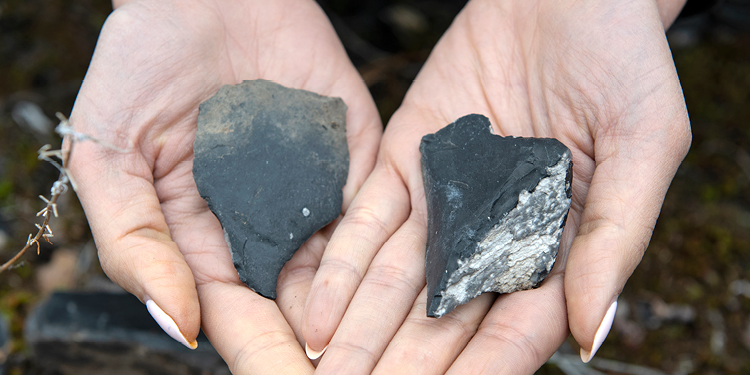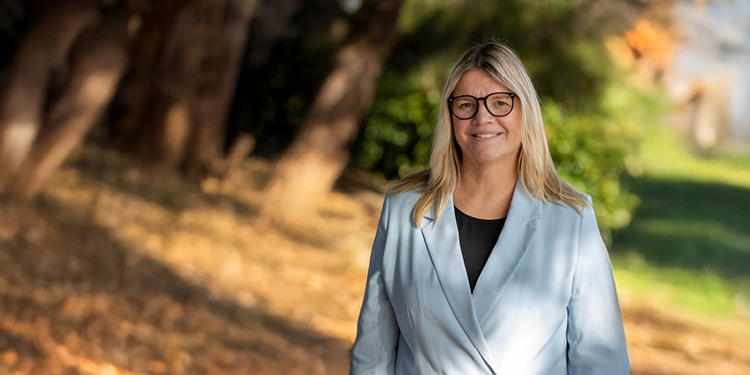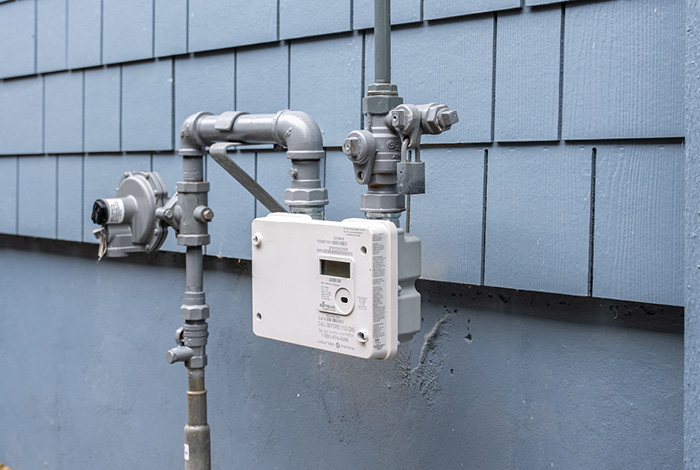How our principles help grow better relationships with Indigenous People
May 4, 2021
It’s often said that the best time to plant a tree is 20 years ago. It takes a long time for a tree to develop and to realize its potential, and it can take a great deal of care and nurturing along the way.
Twenty years ago, with input and guidance from several Indigenous leaders across BC, FortisBC formalized its commitment to positive Indigenous relations by adopting a Statement of Indigenous Principles. These nine statements set the standard for how those within the company would educate themselves about Indigenous culture and priorities, create opportunities for Indigenous contractors and employees and engage with Indigenous People in our business operations.
It’s been 20 years of learning and growth since that time, as FortisBC continues to work to live up to and apply our Indigenous principles to their full potential.
To commemorate the 20th anniversary, we reached out to Bruce Falstead, FortisBC’s original Indigenous relations manager, to learn more about why these were developed, how they’ve made a difference and where we have opportunity for further growth. Now retired, Bruce continues to have a passion for helping people from all backgrounds better understand what it means to work respectfully with Indigenous People.
Recognizing the importance of relationships
Bruce was brought onboard in 2001, just after FortisBC (then BC Gas) had completed a large project through the southern interior. A key learning for the project team was the need for strong, respectful relationships with First Nations communities. They were also learning and making sure projects benefitted both the organization and the people whose Territories our services depended on. This was not only the right thing to do, but vital to delivering energy to customers over the long-term.
“When I came onboard, the company knew they needed to acknowledge and understand that we were dealing with quite different communities from just a regular municipality, and that relationships were key,” said Bruce. “But they didn’t have anything like this going on; they didn’t have an organized system for engaging with First Nation communities.”
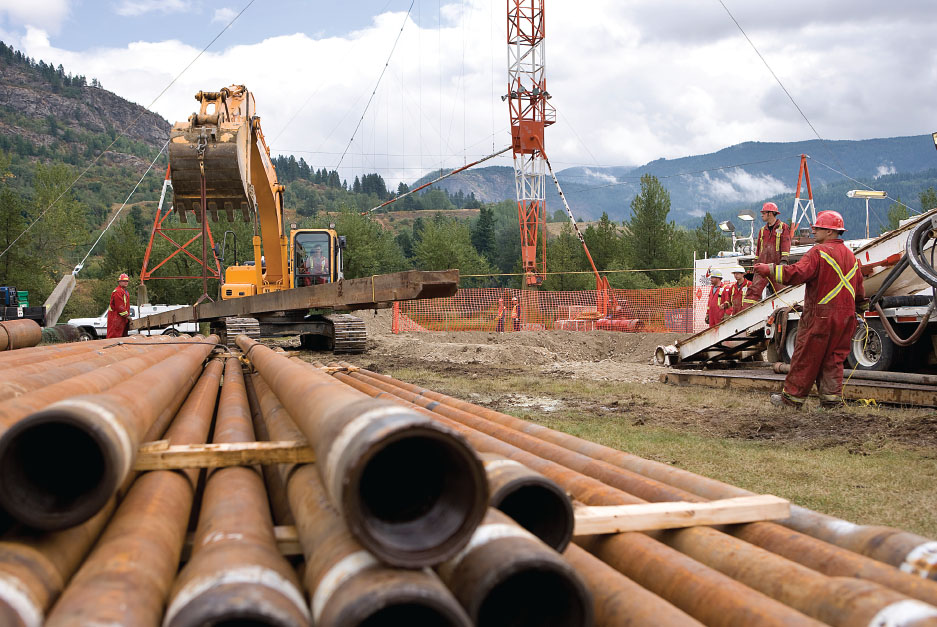
Building the Southern Crossing natural gas line through the interior in 2000 provided valuable learning about the value of positive relationships with Indigenous communities.
Setting the foundation
Bruce, who identifies as Métis, recognized most people within the company had limited knowledge, education and background on the priorities, concerns and history of Indigenous Peoples, even within their own region.
This was before important milestones like the Calls to Action of the Truth and Reconciliation (TRC) Commission of Canada, and the United Nations Declaration on the Rights of Indigenous Peoples—much of the necessary work and learning had yet to start, and even now, is far from complete.
Bruce saw that having well-defined Indigenous principles would set the bar for what it meant to work respectfully with Indigenous People and make clear FortisBC’s expectations to its team and others involved in its projects.
“We needed all that education to take place and we also needed something to guide our actions,” said Bruce. “This gap in learning about Indigenous People can make people afraid to make a mistake, so having guiding principles in place helps people be more comfortable. It also makes clear the level of respect and governance we’re looking for in our business operations.”
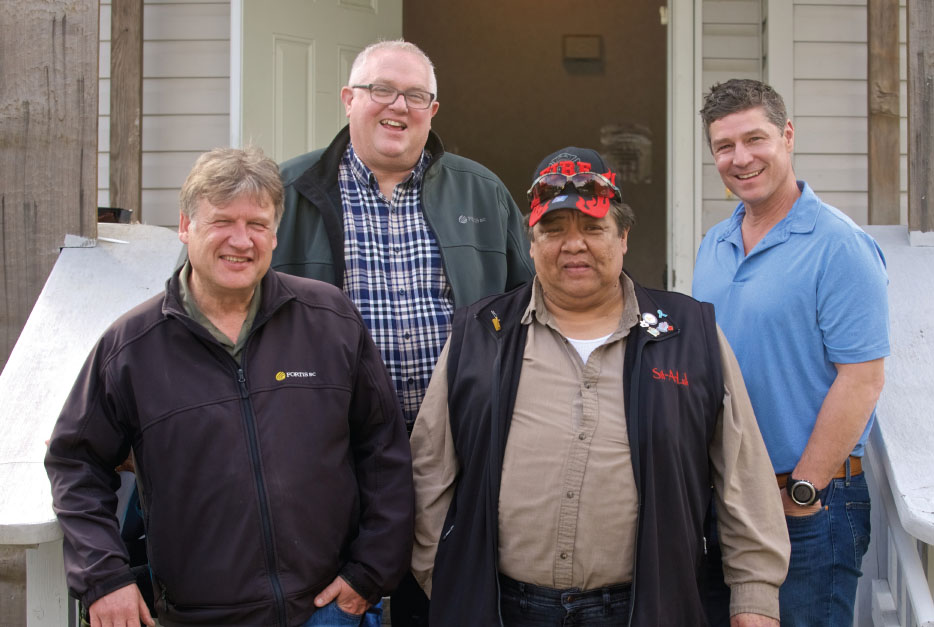
FortisBC operations managers Rob Bradbeer (far left), Darrin Crozier (back left) and Dave McColm (far right) join Rick Peter, member, Cowichan Tribes, (centre) for a drum building day at Sc’ianew First Nation in 2019.
Learning and listening
Bruce’s first step was to seek the input and guidance of Indigenous leaders. He also sought their feedback and consensus before bringing the Indigenous principles in-house.
“To grow any relationship, you need to build trust. It was important to be open about what we wanted to do and, at the same time, engage Indigenous People early in the process to find ways to accommodate their interests,” explained Bruce. “So this wasn’t something we were going to develop in-house and take out and say here are our principles when it comes to engaging.”
Although FortisBC’s leadership team adopted the resulting Indigenous principles wholeheartedly, they also understood the challenges and responsibilities that came with living up to them.
“One of the concerns that we had internally was realizing expectations and a lack of understanding as to how we were going to live up to these and how to engage on them so we had to be careful to focus on things that we could do, that we weren’t making empty promises,” said Bruce.
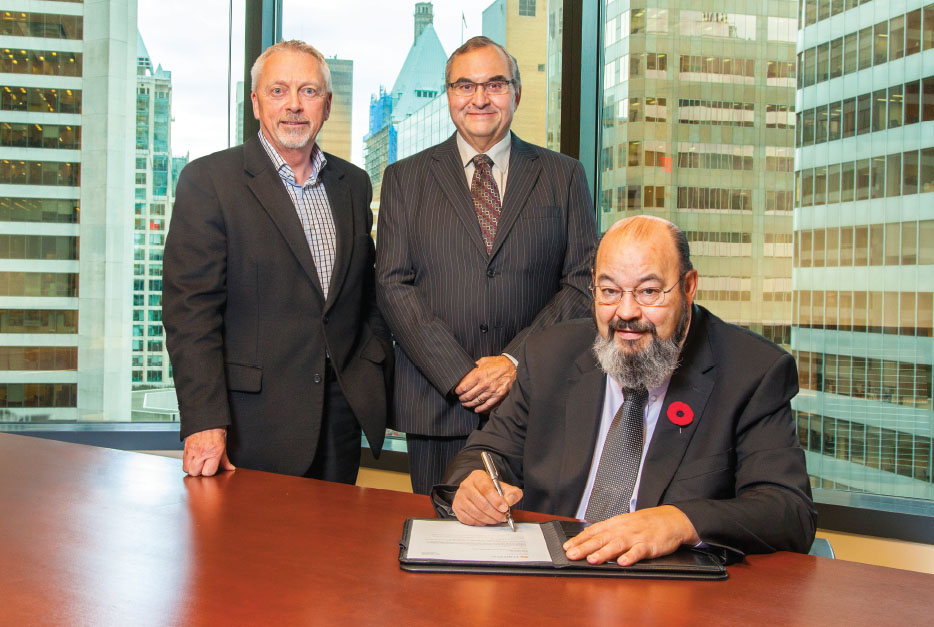
Doug Stout, retired vice-president, FortisBC (far left), Bruce Falstead (centre) and Dave Porter, CEO First Nations Energy and Mining Council of British Columbia signing a memorandum of understanding in 2012, paving the way for certified energy auditors to assist communities with energy efficiency programs and increasing energy conservation.
Putting our Indigenous principles to work
Bruce explains that implementing our Indigenous principles and keeping them active within the organization is an ongoing effort and remains a work-in-progress. Each principle presents unique challenges to implement but also opportunities for growth and learning. For Bruce, the most enjoyable and rewarding Indigenous principles to pursue is understanding culture and priorities.
“Supporting Indigenous interests and goals, understanding what Indigenous cultures, values and beliefs are, that’s huge,” said Bruce. “You’ve got to attend—events, meetings, forums, celebrations—all that stuff that communities do. So if you want to understand that, you’ve got to do that. And once you understand it, your neighbours might not understand it that well, your contractors may not understand that well, then you could educate them. So you’re an advocate for the community.”
Growing this understanding and awareness sets the stage for our other Indigenous principles, in particular those that set expectations around engagement with Indigenous communities. These set out the requirement for open dialogue, as well as working collaboratively toward the mutual interest and benefit of both parties.
“This was a very new approach at the time, and it took listening carefully and really understanding the needs and interests of each community,” said Bruce.
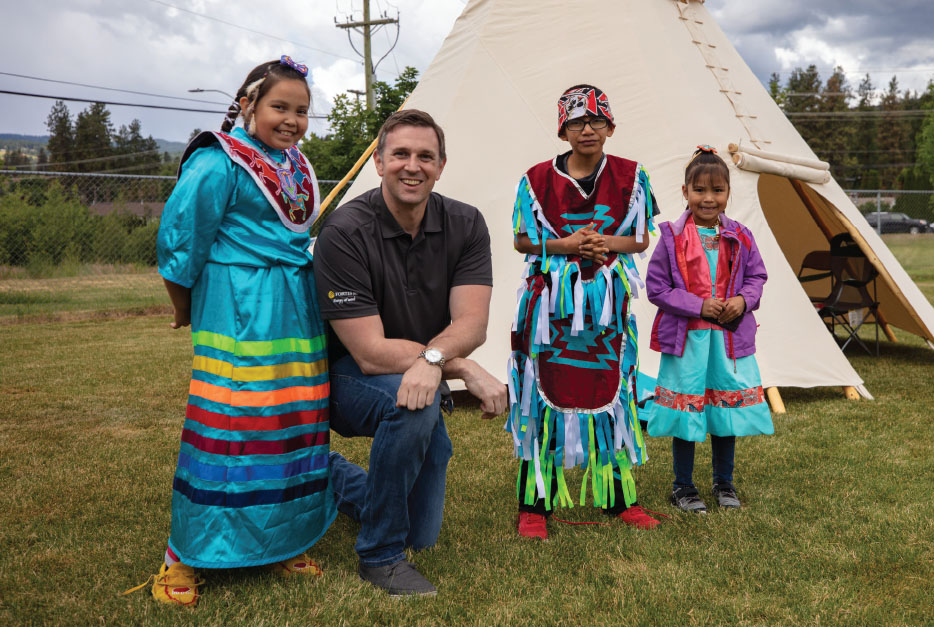
FortisBC corporate communications manager Sean Beardow with performers at the Siya Festival in 2018.
Respect leads to better projects
Applying our Indigenous principles to project engagement resulted in important energy projects moving forward in a much more collaborative and respectful way. This, in turn, led to many enduring partnerships and additional business opportunities for FortisBC and Indigenous communities.
One of the best examples is the landmark equity agreement with the Stz’uminus (Chemainus) First Nation and Cowichan Tribes on our Mt. Hayes LNG facility on Vancouver Island.
By working together, the project resulted in $70 million of economic benefit to the region by the time it was commissioned in 2011 and each partner continues to receive an equity return on their investments.
“This provided an economic foothold which they’ve successfully leveraged to create more economic opportunities in their community,” explained Bruce. “For FortisBC and its customers, Mt Hayes provides a safe, affordable way to meet the needs of customers when energy needs peak during the coldest days of winter. So it benefits everyone.”
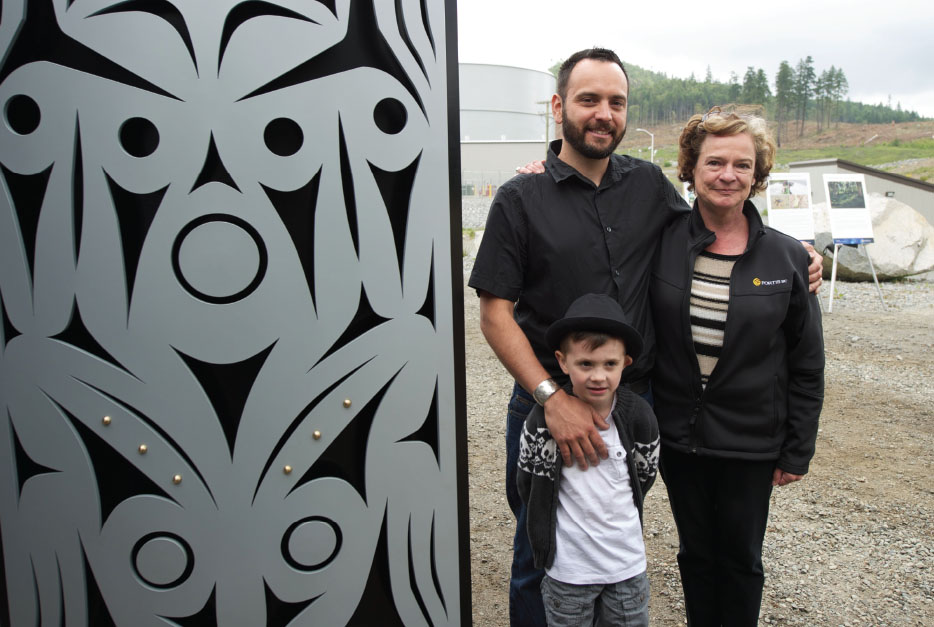
John Marston, sculptor, with his son, and Carol Greaves, retired FortisBC community relations manager, at the opening of the Mt Hayes LNG facility in 2011.
Making space for growth
Bruce admits that creating access to employment and direct business opportunities are the most challenging of our Indigenous principles to implement.
“Pulling people in, getting people inside the company is difficult. There’s lots of barriers to that,” explained Bruce. “Given the nature of what we do, a lot of the opportunities are around digging holes and moving dirt, and many others require highly specialized skills that take time to develop.”
FortisBC has funded a number of scholarships and programs over the years, and now, with more dedicated resources and focused effort, is making headway in creating deeper accessible employment. This is leading to more direct opportunities for Indigenous People at all stages of their career – including a growing number of internship positions. Adding Indigenous employees is also helping FortisBC fill the need for skilled people who reflect the diverse communities we serve.
“We want people to feel they can have a job with us, that they can see themselves within the company, see themselves inside the building,” explained Bruce.
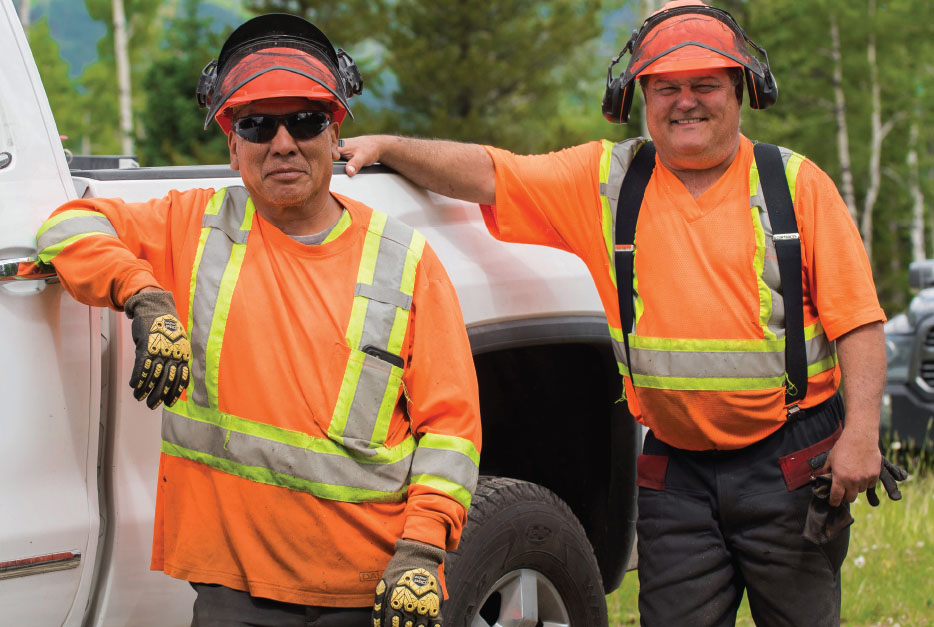
Peter Williams and Darrell Luke of Nupqu, on site in the Cranbrook - Sparwood area, 2019. Nupqu, a business specializing in brush clearing, scrap removal and road access improvements is Indigenous-owned and affiliated with the Ktunaxa Nation.
More learning to take place
Like a well-nurtured tree, our Indigenous principles have helped those within FortisBC grow and mature in their approach to relationships with Indigenous communities. What started as aspirational goals, now form the foundation of our Indigenous Relations and guide both our actions and our words, but FortisBC recognizes that this learning is far from over.
“One of the reasons behind these principles is understanding that this isn’t a one off or a checkbox—this is something that we have to work on all the time. We’re a dynamic organization, and so are these communities. They’re changing all the time, and no one community is the same as another,” said Bruce.
For other organizations considering a similar approach as part of their efforts to formalize their commitment to Reconciliation, Bruce stresses that it’s important to understand the level of ongoing effort and work that is required. For FortisBC, it took three years to develop the Indigenous principles before introducing them to the company, and we’re still working to implement them to their full potential, 20 years later.
“You have to educate people all the time, and we have new people coming into the company, new people coming into leadership positions and people that I’ve dealt with for years, that still need to be reminded about our Indigenous principles,” said Bruce.
FortisBC continues to strive for excellence in this area and turn to Indigenous leaders for guidance. As part of this effort, FortisBC is proud to be pursuing certification in Partnership Accreditation in Indigenous Relations (PAIR) with the Canadian Council for Indigenous Business. In 2019, we became a PAIR Committed member.
The biggest win for Bruce?
“When our Indigenous principles were first introduced I would say that we more than likely looked at our engagement with Indigenous communities as challenging and difficult, and slowly over this time, people now see it as an opportunity to do what’s right and make our business stronger.”

